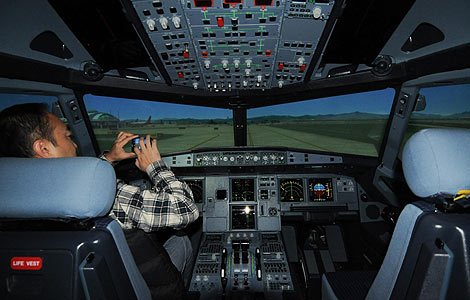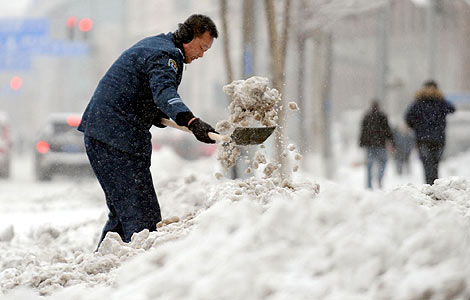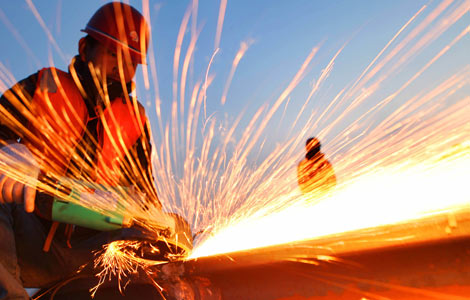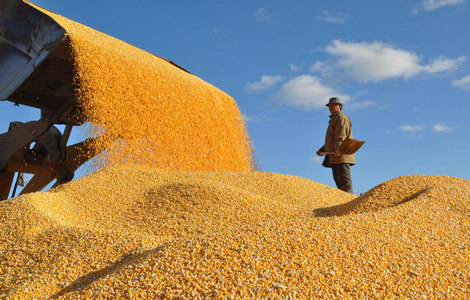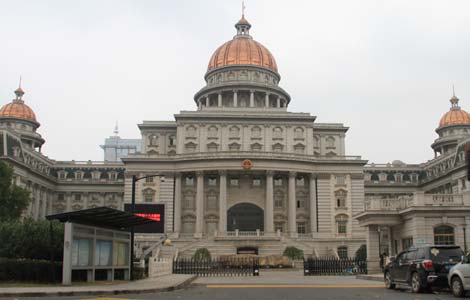
Commerce official urges West to lift export limits on China
Washington and Brussels should lift restrictions on high-tech exports to China, a limit that has impaired their competitiveness in the world's fastest-growing major market, a trade official said.
Exports of high-tech products from the United States to China have fallen sharply over the years as their share in China dropped from 18.3 percent in 2001 to only 6.3 percent in 2011, Vice-Minister of Commerce Zhong Shan said in Shanghai on Friday.
The export restrictions ended up preventing the US and the EU from gaining market share in the world's second-largest economy, Zhong said at the China Import Forum 2012.
He called for developed countries to strengthen trade and cooperation with China for the benefit of both sides.
While a strong willingness has been shown by consumer brands from the US and the EU to sell their products in China, the country's technology imports are declining year by year, noted Tan Li, assistant secretary-general of the China Association of International Trade.
"This reflects a kind of trade protectionism by the West," Tan said.
The US restrictions have not only hampered the development of the Chinese high-tech industry, but have also become one of the causes of the Sino-US trade imbalance, said Jin Yiming, a trader of mechanical and electrical products in Shanghai.
Liang Yanfen, an expert on the global economy with the Chinese Academy of International Trade and Economic Cooperation — a think tank under the Ministry of Commerce — said US limits on high-tech exports to China are counter-productive for both countries.
Liang said solving the trade imbalance is a long-term goal for China. Expanding imports of high-tech goods is key to helping China trim its trade surplus, and it can also contribute to easing bilateral tension.
Although the country's annual trade surplus has gradually shrunk over the past few years, China's trade surplus is still large, said Zhang Yunling, director of the division of international studies at the Chinese Academy of Social Sciences.
There are two ways to trim the trade surplus. One is to stimulate domestic consumption, which may require a long time to achieve results. The other is to boost imports.
China considers expanding imports a serious task, but it is not easily achieved through buying technology goods from the US and EU countries because of the restrictions.
"We have noticed some efforts taken by the US to address China's concerns, but there has been little progress," Zhang said.
China expects to send a strong signal to the US and the whole world about its commitment to expanding imports through purchasing more high-tech goods from developed countries, Zhang added.
Trade tension between China and the West has been running high recently, as both have launched investigations against each other over goods such as solar materials.
China has become the world's second-largest importer, with annual imports swelling from $295.3 billion to $1.7 trillion in the last decade, Zhong said.
In 2011, China was the largest export destination for Japan, Brazil and South Africa, the second-largest export market for the EU, and the third largest for the US and Russia.
"China's growth has created a huge demand for products and technology imports, and that will bring about great opportunities for both Chinese and international enterprises," Zhong said.
To simplify import procedures, China in August introduced paperless customs clearance in 12 pilot customs offices including in Beijing, Shanghai and Guangzhou, said Zhang Hualu, deputy head of Shanghai Customs.
Contact the writers at wang_ying@chinadaily.com.cn and dingqingfen@chinadaily.com.cn


